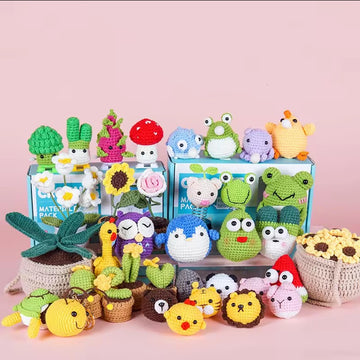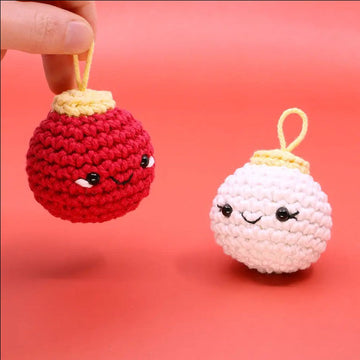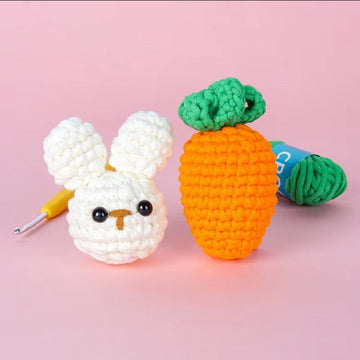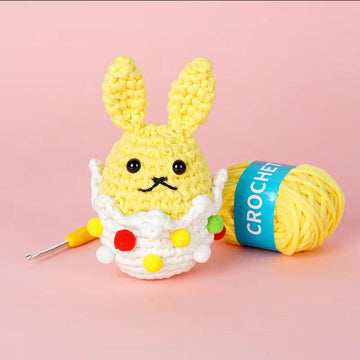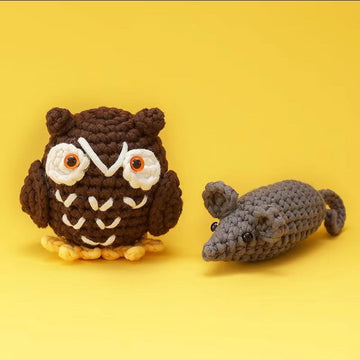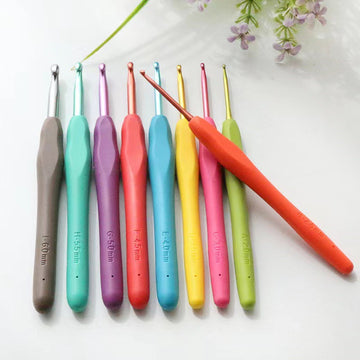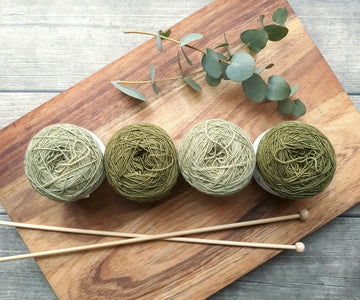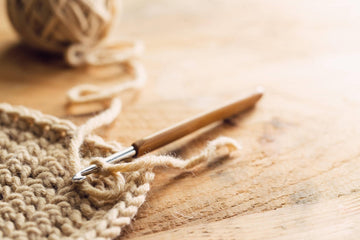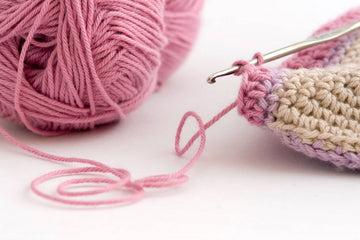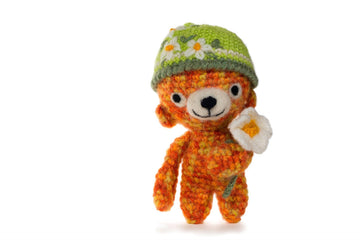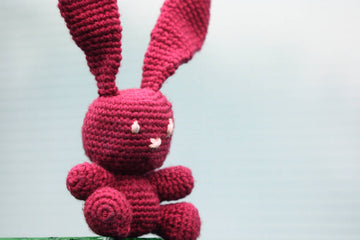Crocheting is a beloved craft that allows you to create beautiful, one-of-a-kind projects. However, the success of your crochet work largely depends on the type of yarn you choose. With the vast array of yarn options available, selecting the right yarn can feel overwhelming. In this comprehensive guide, we'll explore the key factors to consider when choosing the perfect yarn for your crochet projects, ensuring you achieve the desired results and create stunning pieces.
| Table of Contents |
| Understanding Yarn Fibers |
| Yarn Weight and Gauge |
| Color and Texture Considerations |
| Caring for Your Crochet Projects |
| Choosing the Perfect Yarn for Your Crochet Projects |
| Tips for Successful Yarn Selection |
| Conclusion |
Understanding Yarn Fibers

The first step in selecting the perfect yarn is to understand the different fiber types and their unique properties. Yarn can be made from a variety of natural and synthetic fibers, each with its own characteristics that can impact the final look and feel of your crochet project.
Natural Fibers:
- Cotton: Known for its breathability, durability, and absorbency, cotton yarn is a popular choice for projects like dishcloths, towels, and summer garments. It's a smooth, non-elastic fiber that produces a crisp, structured fabric.
- Wool: Wool yarn is incredibly versatile, offering warmth, resilience, and a soft, cozy texture. It's an excellent choice for cold-weather accessories, sweaters, and blankets. Wool can be either machine-washable or hand-wash only, depending on the type.
- Silk: Prized for its lustrous sheen and luxurious feel, silk yarn is often used in high-end crochet projects, such as scarves, shawls, and elegant home decor items. It's a delicate fiber that requires gentle handling.
- Linen: Linen yarn is renowned for its crisp, structured texture and excellent breathability. It's a popular choice for summer garments, home goods, and projects that require a more rigid, structured fabric.
Synthetic Fibers:
- Acrylic: Acrylic yarn is a popular and affordable option that is easy to care for and maintain. It's known for its durability, softness, and vibrant colors. Acrylic is often used for a wide range of crochet projects, from afghans and clothing to amigurumi (crocheted toys).
- Polyester: Polyester yarn is strong, resistant to shrinkage, and easy to care for. It's a good choice for projects that require a more uniform, structured fabric, such as home decor items or accessories.
- Rayon: Rayon yarn is made from regenerated cellulose fibers and offers a smooth, silky texture. It's often used for projects that require a drapey, flowing fabric, such as garments and accessories.
Understanding the unique properties of different fiber types will help you select the best yarn for your crochet project, ensuring the final result meets your desired look and functionality.
Yarn Weight and Gauge

Another crucial factor to consider when choosing yarn for crochet is the yarn weight and gauge. Yarn weight refers to the overall thickness of the yarn, while gauge is the number of stitches and rows per inch or centimeter.
Yarn Weight:
- Lace weight: Extremely fine and delicate, lace weight yarn is typically used for intricate, lightweight projects like shawls, doilies, and delicate accessories.
- Fingering weight: Also known as sock weight, fingering weight yarn is a lightweight option that works well for socks, shawls, and finely detailed projects.
- Sport weight: Sport weight yarn is a medium-light option that's versatile for a variety of projects, including accessories, garments, and lightweight blankets.
- DK (Double Knitting) weight: DK weight yarn is a popular, medium-weight option that's suitable for a wide range of crochet projects, from apparel to home decor items.
- Worsted weight: Worsted weight yarn is a medium-heavy fiber that's often used for sweaters, afghans, and other larger projects that require a sturdy, durable fabric.
- Aran weight: Aran weight yarn is a heavy, bulky option that's perfect for creating cozy, textured pieces like winter hats, scarves, and thick blankets.
- Chunky weight: Chunky weight yarn is a thick, substantial fiber that's ideal for fast, chunky projects like rugs, baskets, and quick-knit accessories.
Gauge:
The gauge of your yarn will determine the size of your crochet stitches and the overall fabric density. It's important to match your yarn gauge to the pattern you're working with to ensure a proper fit and desired fabric texture. Most crochet patterns will specify the recommended gauge for the project.
By understanding yarn weight and gauge, you can select the perfect yarn to achieve the desired look, drape, and functionality for your crochet project.
Color and Texture Considerations

In addition to the practical considerations of fiber type and yarn weight, the color and texture of the yarn can also significantly impact the overall aesthetic of your crochet project.
Color:
Choosing the right color yarn can make all the difference in the final appearance of your crochet piece. Consider the following factors when selecting yarn colors:
- Project purpose: The intended use of your crochet project may influence the color you choose. For example, vibrant, cheerful colors might be more appropriate for a child's toy, while soft, neutral tones may be better suited for a cozy throw blanket.
- Personal style: Reflect on your own personal style and color preferences to ensure the final product aligns with your taste and fits seamlessly into your home or wardrobe.
- Color theory: Familiarize yourself with basic color theory principles, such as complementary colors, analogous colors, and color schemes, to create visually striking crochet projects.
- Variegated or solid: Variegated yarns, which feature multiple colors blended together, can create beautiful, unique patterns in your crochet work. Solid-colored yarns, on the other hand, offer a more uniform, classic look.
Texture:
The texture of the yarn can also greatly impact the overall feel and appearance of your crochet project. Consider the following textural qualities when selecting yarn:
- Smooth vs. textured: Smooth, even yarns tend to produce a clean, refined look, while textured yarns, such as those with slubs or nubs, can add visual interest and a more rustic, handmade feel to your crochet pieces.
- Sheen and luster: Yarns with a slight sheen or lustrous quality, like those made from silk or rayon, can create a sophisticated, elegant look. Matte yarns, such as cotton or linen, offer a more subtle, natural aesthetic.
- Ply: The number of individual plies or strands in the yarn can affect its thickness, durability, and overall texture. Single-ply yarns tend to have a softer, more delicate feel, while multi-ply yarns are generally sturdier and more durable.
By considering both color and texture, you can select the perfect yarn to elevate the visual appeal and tactile qualities of your crochet projects.
Caring for Your Crochet Projects

Once you've chosen the perfect yarn for your crochet project, it's important to understand how to properly care for the finished piece to ensure its longevity and maintain its intended look and feel.
Washing and Drying:
- Natural fibers: Yarns made from natural fibers, such as cotton, wool, and linen, often require gentle hand-washing or machine-washing on a delicate cycle. Always check the care instructions provided by the yarn manufacturer.
- Synthetic fibers: Yarns made from synthetic fibers, like acrylic or polyester, are generally machine-washable and dryable on a low heat setting.
- Blocking: Blocking, a process of gently stretching and shaping your crochet project, can help it maintain its desired size and shape. This is especially important for lace or intricate crochet pieces.
Storage and Maintenance:
- Proper storage: Store your crochet projects in a cool, dry place, away from direct sunlight, to prevent fading and damage. Avoid storing them in plastic bags, as this can trap moisture and lead to mold or mildew.
- Regular cleaning: Dust and dirt can accumulate on your crochet projects over time. Gently clean them with a soft brush or lint roller to keep them looking their best.
- Moth prevention: For wool or natural fiber projects, be sure to store them in a sealed container or use moth repellent to prevent damage from pests.
By understanding the proper care and maintenance techniques for your chosen yarn, you can ensure that your crochet projects maintain their beauty and durability for years to come.
Choosing the Perfect Yarn for Your Crochet Projects
Now that you have a solid understanding of the key factors to consider when selecting yarn for crochet, let's explore how to choose the perfect yarn for some common crochet project types.
Garments and Accessories:
When crocheting garments or accessories, such as sweaters, hats, or scarves, you'll want to choose a yarn that provides the desired level of warmth, drape, and wearability. Consider the following:
- For warm, cozy garments, opt for a natural fiber like wool or a wool blend.
- For drapey, lightweight accessories, choose a soft, smooth yarn like cotton, silk, or rayon.
- For a structured, crisp look, select a firm, non-stretchy yarn like linen or cotton.
Home Decor:
Crochet is a versatile craft that can be used to create beautiful home decor items, such as blankets, pillows, or baskets. When selecting yarn for these projects, consider the following:
- For soft, cozy blankets and throws, choose a bulky or chunky weight yarn in a natural fiber like wool or a wool blend.
- For decorative pillows or accent pieces, opt for a yarn with a unique texture or sheen, such as velvet, boucle, or metallic.
- For sturdy, utilitarian items like baskets or rugs, select a durable, tightly-spun yarn like cotton or linen.
Toys and Amigurumi:
Crocheting toys and amigurumi (crocheted stuffed animals) requires a yarn that is both soft and durable to ensure the safety and longevity of the finished product. Consider the following:
- For soft, cuddly toys, choose a smooth, non-splitting yarn like acrylic or a high-quality synthetic blend.
- For toys that will see a lot of use, opt for a sturdy, machine-washable yarn like cotton or a cotton-acrylic blend.
- Avoid yarns with loose fibers or long strands that could pose a choking hazard for young children.
- By carefully considering the intended use, desired look, and practical needs of your crochet project, you can select the perfect yarn to bring your creative vision to life.
Tips for Successful Yarn Selection

To further enhance your yarn selection process, here are some additional tips to keep in mind:
- Swatch it out: Before committing to a yarn for your project, create a small swatch to test the gauge, drape, and overall feel of the yarn. This will help you ensure the final result meets your expectations.
- Consider the project's needs: Think about the specific requirements of your crochet project, such as the level of warmth, durability, or breathability needed, and choose a yarn that will best fulfill those needs.
- Experiment with different fibers: Don't be afraid to step out of your comfort zone and try a new fiber type. Exploring different yarn options can expand your creativity and lead to unexpected, yet beautiful, results.
- Invest in quality yarns: While budget is always a consideration, higher-quality yarns often offer superior performance, longevity, and a more polished final product. Prioritize quality over quantity when possible.
- Consider the project's recipient: If you're crocheting a gift for someone else, consider their personal style, needs, and preferences when selecting the yarn. This will ensure the finished piece is truly special and meaningful to them.
- Shop from reputable sources: Purchase your yarn from trusted, reliable sources, whether it's a local yarn shop, an online retailer, or directly from the yarn manufacturer. This will help you avoid any quality or consistency issues.
- Keep detailed notes: As you explore different yarn options, keep a record of the fiber types, weights, and brands you've used, as well as your thoughts on their performance and suitability for various projects. This will serve as a valuable reference for future crochet endeavors.
By following these tips and continuously expanding your knowledge of yarn properties and characteristics, you'll be well on your way to selecting the perfect yarn for every crochet project you undertake.
Conclusion
WOOHOBBY is a go-to destination for hobby enthusiasts seeking well-designed, engaging DIY kits. Whether you're an aspiring model builder, an art lover, or someone who enjoys crafting home decor, WOOHOBBY has a diverse selection of kits to suit your interests. The kits are known for their attention to detail, comprehensive instructions, and top-notch materials, making the assembly process both enjoyable and rewarding. If you're looking to dive into a new hobby or expand your creative skills, WOOHOBBY's kits are an excellent choice that will keep you engaged and inspired.
Choosing the right yarn is a crucial step in creating beautiful, high-quality crochet projects. By understanding the different fiber types, yarn weights, and textural qualities, you can make informed decisions that will result in crochet pieces that not only look stunning but also meet your practical needs. Remember to consider the intended use of your project, your personal style preferences, and the care requirements of the yarn when making your selection. With practice and experimentation, you'll develop a keen eye for identifying the perfect yarn for any crochet project. Happy crocheting!
